Trees Birds Mammals Fish Amphibians Reptiles
Wild Algarve
Bookshop
Ringlet Butterfly - Aphantopus hyperantus
Phylum: Arthropoda - Class: Insecta - Order: Lepidoptera - Family: Nymphalidae
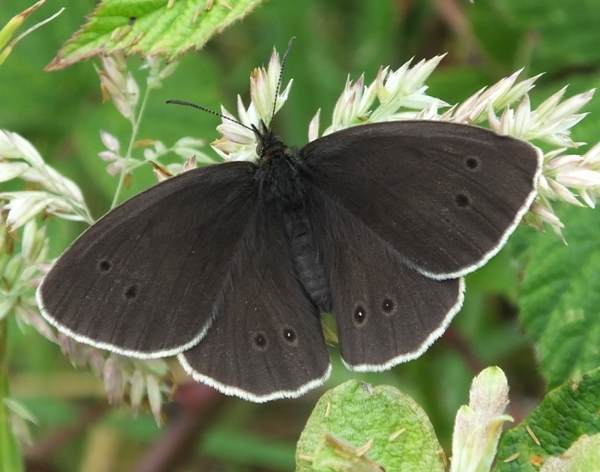
Seen on the wing from June to the end of August, these are common butterflies of damp grassland, woodland clearings, hedgerows and scrubby wasteland.
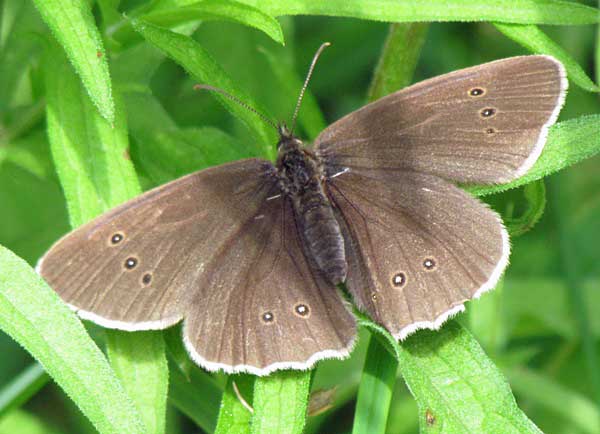
The common name comes from the distinctive rings or eyespots on the hindwings. Forewings and hindwings are fringed with white.
Description
When freshly emerged Ringlets have dark brown (sometimes almost black) velvety wings that readily absorb warmth from sunlight; as a result, they are among the small minority of butterflies that can be seen on the wing on overcast days. Gradually the background colour of the wings becomes a paler shade of brown.
Distribution
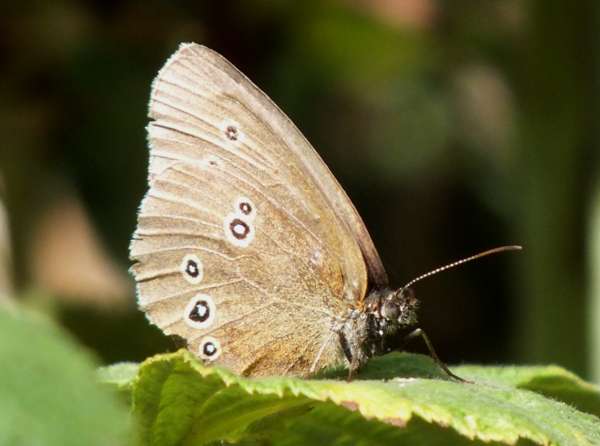
The Ringlet butterfly is found throughout Britain and Ireland, but this species is absent from northern Scotland. The specimens shown on this page were photographed in West Wales, where these butterflies are very common in summer. Elsewhere this butterfly can be seen in most of Europe except northern Scandinavia and southern parts of Portugal, Spain and Italy; its range extends across Asia to Japan.
Habitat
Wherever there are brambles or Wild Privet along a woodland edge or a hedgerow, the Ringlet butterfly is attracted to the nectar in their flowers.
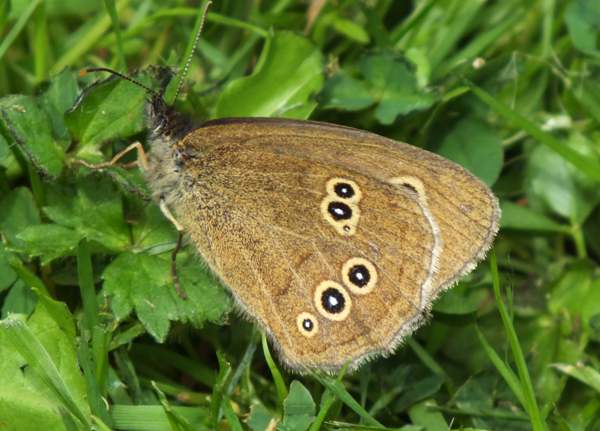
Lifecycle
Ringlet eggs are laid among coarse grasses, and the larval foodplants include rank grasses such as Cock's-foot (Dactylis glomerata) and Common Couch (Elytrigia repens) as well as the various meadow-grasses (Poa species). Initially pale yellow, the eggs turn light brown before hatching in typically two to three weeks.
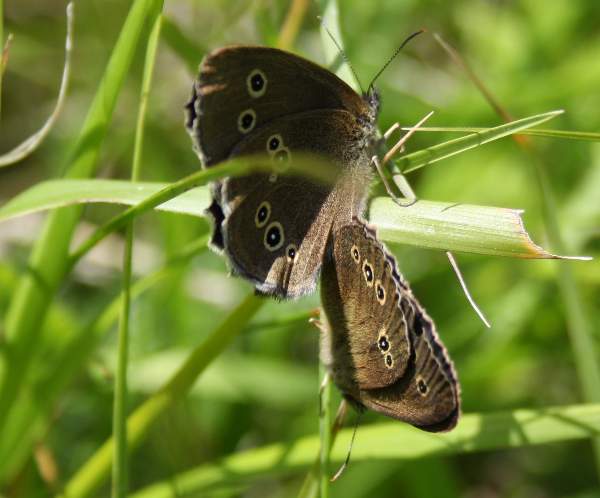
Ringlet larvae feed at night, and so to see them take a torch into rank grassland. They moult four times, and after the third moult the larvae hibernate, emerging to feed in winter only if the weather is unusually warm. In spring they resume feeding before pupating at the bases of tussocks of grass. After about two weeks the adult emerges from its chrysalis.
Studying butterflies and moths...
Excited at the prospect of flyfishing? So are we, and we're pretty sure you would find the Winding River Mystery trilogy of action-packed thrillers gripping reading too. Dead Drift, Dead Cert, and Dead End are Pat O'Reilly's latest river-and-flyfishing based novels, and now they are available in ebook format. Full details on our website here...
Buy each volume in ebook format for only £2.47 on Amazon... Paperbacks also available on Amazon at £6.95 each. All proceeds go towards keeping the First Nature website online.
Please Help Us: If you have found this information interesting and useful, please consider helping to keep First Nature online by making a small donation towards the web hosting and internet costs.
Any donations over and above the essential running costs will help support the conservation work of Plantlife, the Rivers Trust and charitable botanic gardens - as do author royalties and publisher proceeds from books by Pat and Sue.